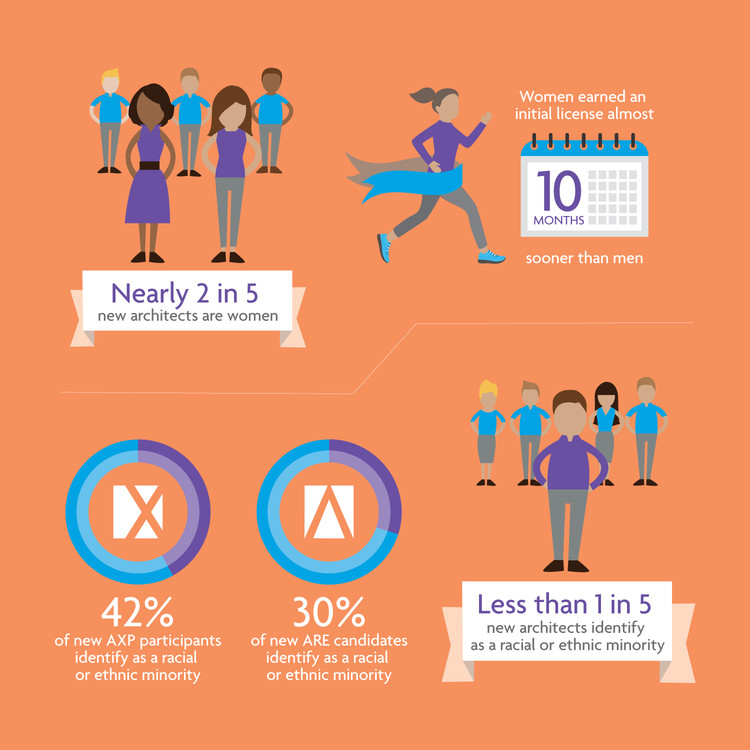
It’s no secret that the architecture field struggles with diversity. Both personal stories and deeper studies detail the profession’s lack of representation. But despite concerns suggesting diversity in the field remains stagnant, there’s good news: the latest data from the National Council of Architectural Registration Boards (NCARB) reveals that gender, racial, and ethnic diversity is slowly improving.
The 2017 edition of NCARB by the Numbers (NCARB’s annual data report) indicates that while the number of architects and licensure candidates holds steady, the pool of individuals is more diverse than ever before. Although there is still much room for improvement, this data provides an encouraging glimpse into the future of the profession.
Improved Equity and Diversity
NCARB’s data reveals that progress is steadier and faster when it comes to gender. In 2016, gender equity improved along all career stages for the first time—from the early stages of a career in architecture to becoming a licensed architect and beyond.
Women now account for 36 percent of newly licensed architects, up two percent from 2015. Women also earn an initial license almost 10 months sooner than their male peers.
Comparatively, racial and ethnic equity is progressing more slowly, especially among practitioners. Last year, racial and ethnic diversity among Architectural Experience Program™ (AXP™) and exam candidates improved slightly—up three percentage points for both groups. At the same time, diversity among newly licensed architects and NCARB Certificate holders remained the same. However, growth in early career stages suggests that these numbers will improve as candidates progress toward licensure.
But even while diversity strengthens across early career stages, there’s still work to be done: while 4 percent of new NCARB Record holders identify as Black or African American, that number would have to more than triple to reach the 13 percent seen in the the US population, according to the Census Bureau.

Breaking Down Barriers
There are many factors that contribute to the lack of diversity in architecture, ranging from the economic to the personal. According to the American Institute of Architects’ (AIA) 2015 survey on Diversity in the Profession of Architecture, these include:
- Little knowledge of architecture as a career option
- Difficulty affording the costs of an architecture degree
- Scarcity of role models in architecture for people of color
- Predisposition for first- and second-generation college students to choose other careers with greater earning potential
- Perceived pay gap between white men and other professionals in the field
Additional factors contribute to the field’s unequal gender representation, such as lack of job flexibility and work-life balance.
In an effort to address some of these barriers and make licensure more accessible to candidates of all backgrounds, NCARB has made several program changes to help eliminate unnecessary hurdles. Recent updates include a reduction in the AXP’s required hours and the re-alignment of experience areas, as well as the ability to retake an exam in just 60 days. Together, these changes are intended to streamline the time to licensure, allowing individuals to work toward greater earning power earlier in their careers.
Other updates include new alternative routes to licensure and certification for individuals who may not follow a straightforward path to licensure. NCARB has also introduced the Integrated Path to Architectural Licensure (IPAL), which enables students to work toward licensure while in school. These changes may not have an immediate impact on diversity in the field, but they could help open doors to a wider pool of candidates.

What’s Next
Over the next several years, NCARB hopes to see the impact of recent program changes reflected in architecture’s gender, racial, and ethnic diversity. In the meantime, the profession must examine additional ways to encourage growth in those groups that remain underrepresented.
A key step is seeking out ways to create role models by promoting diversity in architectural leadership—both women and people of color remain a small percentage of authority figures in firms and other organizations within the profession.
To learn more about diversity in architecture, visit our interactive NCARB by the Numbers database.

